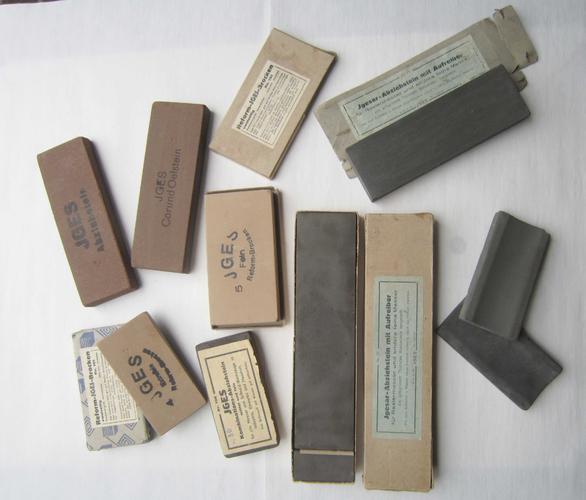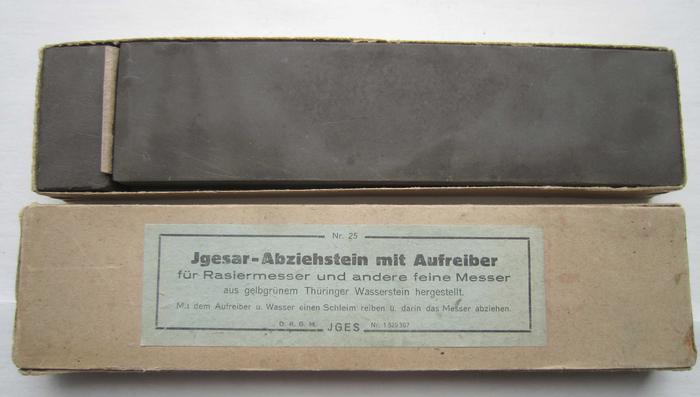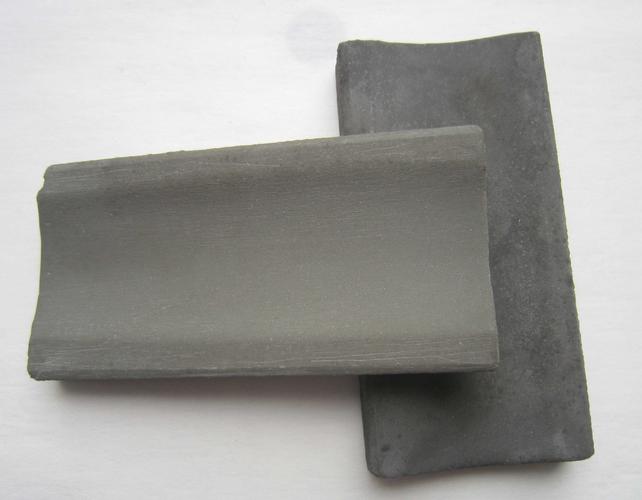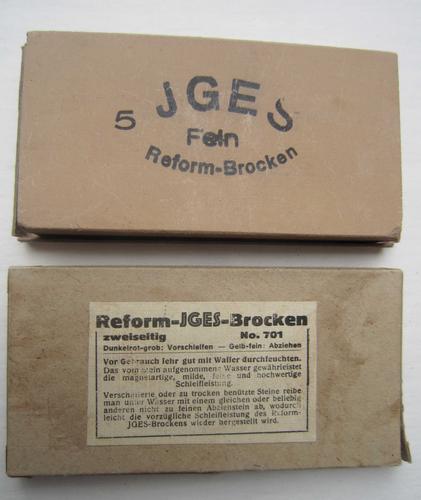Results 1 to 10 of 41
Thread: Escher – Artificial !
Threaded View
-
07-28-2012, 04:51 PM #1
 Escher – Artificial !
Escher – Artificial !
In the 1920’s the company Johan Gottfried Escher, Sonneberg was split in the companies J.G. Escher and Son und the company JGES (=Johan Gottfried Escher Sonneberg) KG.
After J.G. Escher and Son ran into insolvency in 1930 it was taken over by JGES KG.
JGES began around 1920 with the fabrication of artificial sharpening stones because the natural stones in the area of Steinach-Sonneberg were getting rarer and the demand after WW1 rised.
The following photo gives an overview of different water and oilstones, that were produced by JGES.

Special stones for sharpening razors were made of the saw dust from cutting the natural stones for several decades.

You can read on the boxes of these stones: ..... Made of yellow-green thuringian waterstone.

The hones are in fact not bad in usage even if they do not reach the natural yellow-green Thuringians of course. They are somehow softer and faster than the naturals.
The smaller concave stones were used by german soldiers in WW2.

There was also the effort to imitate the coticule stones which is shown in the following picture.

Since Escher also cut and prepared coticules during a certain time these stones may exist from coticule saw dust too. The smell is somehow comparable to a coticule, the honing performance not.
-
The Following 39 Users Say Thank You to hatzicho For This Useful Post:
AlanII (07-29-2012), AljuwaiedAK (10-17-2015), baldy (07-31-2012), Bram (05-12-2014), brooksie967 (02-04-2013), Bushdoctor (07-29-2012), carrolljc (11-23-2014), Chevhead (01-30-2016), DFriedl (07-31-2012), Disburden (09-15-2012), Double0757 (02-04-2013), eleblu05 (07-28-2012), engine46 (02-06-2016), jaswarb (07-28-2012), JimmyHAD (07-28-2012), livingontheedge (07-28-2012), Logistics (07-28-2012), manah (10-27-2013), Margeja (02-03-2013), Maxi (07-28-2012), mumpig (02-05-2013), Mvcrash (07-31-2012), Neil Miller (08-01-2012), nipper (02-05-2013), Noswad (07-28-2012), pixelfixed (07-28-2012), Puerco (07-28-2012), randydance062449 (07-29-2012), RogueRazor (02-03-2013), roughkype (07-28-2012), RusenBG (09-20-2016), ScottGoodman (07-31-2012), SirStropalot (07-28-2012), sleekandsmooth (02-04-2013), stingray (08-03-2012), Storsven (02-03-2013), Vasilis (01-31-2016), Willisf (01-30-2016), Zephyr (07-28-2012)


 47Likes
47Likes LinkBack URL
LinkBack URL About LinkBacks
About LinkBacks






 Reply With Quote
Reply With Quote
